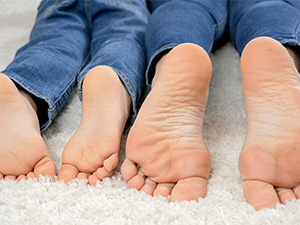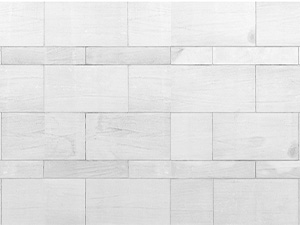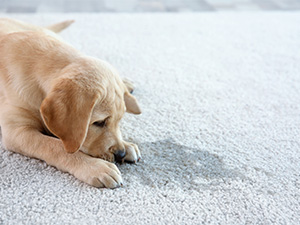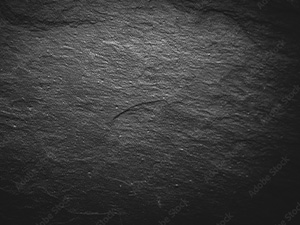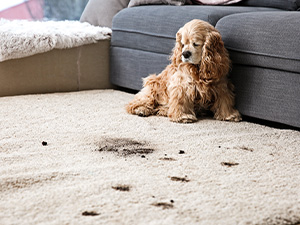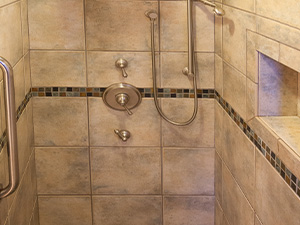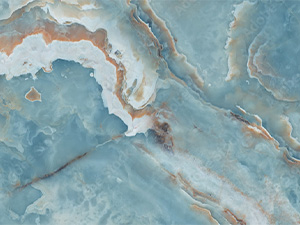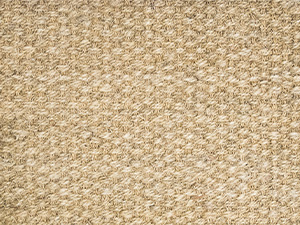Help! I Have Stiff Carpet
We know when you first had your carpet installed, it was plush and soft. You enjoyed sitting and walking barefoot on it. Now however, it is stiff and possibly even crunchy in places. Nobody likes that. Let’s take a look at what causes stiff carpet and how to fix it.
What causes a soft carpet to become stiff and hard?
There are actually several reasons your carpet may become stiff:
- Accumulation of dirt, residue, and debris – The buildup of dirt, debris, and residues within the carpet fibers can cause this problem. Over time, foot traffic, spills, and other contaminants can build up, creating a layer that stiffens the carpet. This accumulation can also attract more dirt, making the problem progressively worse.
- Harsh chemicals – Harsh chemicals used to remove a spill or stain are harder to remove from the carpet and may leave behind a residue that holds onto dirt, creating the stiff carpet feel.
- Stains – The presence of stubborn stains is another contributing factor to this issue. Spills and stains can leave behind residues that harden over time, making the affected areas feel stiff and crunchy.
- Improper DIY cleaning methods – DIY carpet cleaners are not as powerful as professional cleaning equipment and can leave chemical residue behind that can stiffen your carpet.
The good news is, there is a fix for stiff carpet: A good, thorough deep- cleaning.
Is this a good DIY project?
Unfortunately, no, for this issue, DIY is not a good idea. These are just two of the reasons you should not DIY this project.
- Professional equipment is much more powerful than DIY equipment and can remove much more of the dirt and cleaning agents that may be used in the cleaning process.
- DIY equipment is not always properly maintained, not always through any fault of the company. Sometimes people return equipment that they misused or broke and don’t say anything, making it a problem for the next user, which could be you.
A thorough deep cleaning by a professional is the best answer to a stiff carpet problem. A stiff carpet can result from the accumulation of dirt, residues, and stains over time. Professional cleaning is designed to address these issues effectively. By deep cleaning the carpet fibers, removing stubborn stains, and using proper cleaning agents, professionals can bring back the softness and flexibility of your carpet, enhancing its overall look and feel.
By Sharon Koehler. This article is one of a series of articles written and published on behalf of Surface Care PRO Partners.

